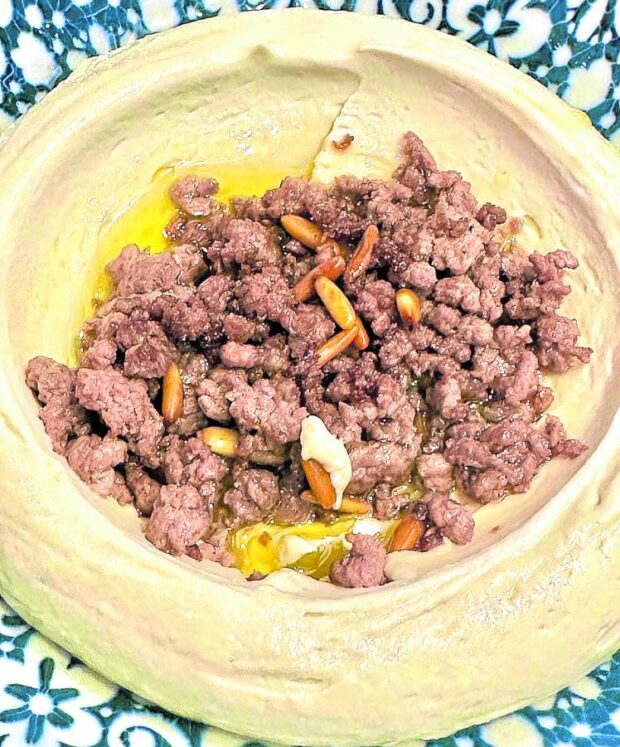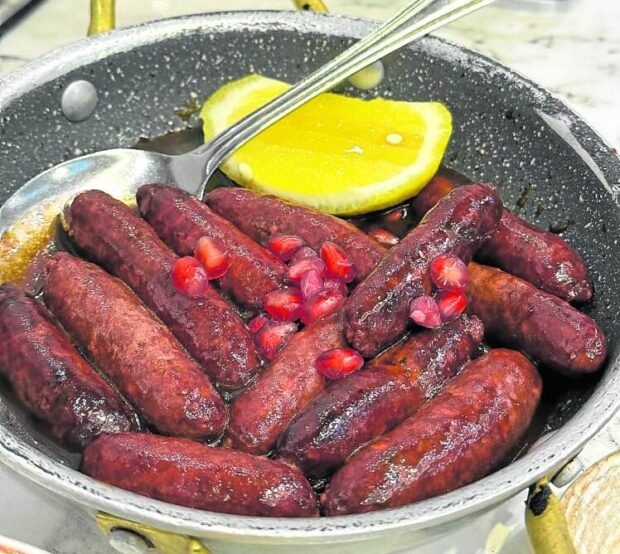No fasting in the Middle East

What’s better than hummus? Hummus with lamb! —Photos by Margaux Salcedo
We’re not that unfamiliar with Middle Eastern food because here in the Philippines, we do have restaurants that carry the mezze or appetizer staples such as hummus and moutabal. But it’s always refreshing to try these dishes from their places of origin, so I was excited to try all these upon landing in Doha and then in Dubai last week.
In Doha, we got to visit one of their popular chains called Afghan Brothers, which has eight outlets all over Qatar. This restaurant specializes in traditional Arabic cuisine served family-style, i.e., in heaping amounts for sharing. You can opt to dine traditionally, so you would be seated on the floor, or contemporary-style using regular tables. The specialty of this restaurant is “full goat with mandi” rice. They also have options for camel, lamb and chicken.
Mandi is a traditional dish that originated from Yemen, consisting mainly of meat and rice with a blend of spices. It is cooked in a pit underground then served in a large tray that works as their bilao or the bamboo tray we are familiar with here in Manila. The dish is good for around 10 pax although they say it is only good for three to four pax.
Mandi rice is usually made with basmati rice, meat—either lamb, camel, goat or chicken—and a mixture of spices called hawaij, which includes saffron, cardamom, cumin, cloves and cinnamon. The meat is cooked using wood fire in the tannour, a clay oven (what we know as pugon).
The meat is exceptionally delicious as it is boiled with whole spices until tender. The spiced stock is then used to cook the basmati rice at the bottom of the tandoor. The meat is suspended inside the tandoor above the rice, without touching the charcoal. After that, the whole tandoor is then closed with clay for up to eight hours.
The result is really flavorful and fragrant rice with very tender and flavorful goat meat. It’s a must try!
In Dubai, I was able to visit Al Hallab at Mall of the Emirates for some authentic Lebanese cuisine. The great discovery here was hummus with lamb meat and pine nuts. Hummus alone is good but with the addition of the ground lamb meat and pine nuts, it becomes memorable!

How to eat longganisa when you don’t eat pork: try sujuk or Lebanese lamb longganisa!
Another great discovery here was the sojok or spicy homemade sausages with pomegranate sauce. It’s their version of longganisa but using lamb and served spicy. This is so good!
Here are other must-tries, which you can enjoy anywhere in Dubai: moutabal, a dip using roasted eggplant, extra virgin olive oil; tabbouleh, a Levantine salad made mostly of finely chopped parsley, tomatoes, mint and onion, then seasoned with olive oil, lemon juice, salt and sweet pepper; and warak enab, which is rice and spiced ground beef wrapped in grape leaves. The hotel breakfast buffets usually serve these!
Dubai, however, is now the a melting pot of cultures. We also had an exceptional experience of Argentinian cuisine at Sucre, where one must try the yellowtail ceviche and the lamb chops with chimichurri.
For pasalubong, it was very convenient to go to the Carrefour Hypermart to load up on spices. They have a complete selection of spices from around the world, including hard-to-find saffron. The spices are also labeled as to origin so you will know if what you are buying is from Egypt or California.
Our trip to Dubai was too short but I hope to be able to come back and experience more Arabic cuisine. Shukran, Doha and Dubai! As salamu alaikum. Till we meet again!

